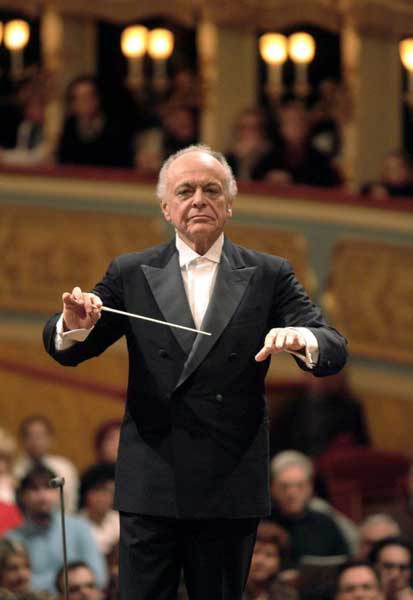Prom 57: New York Philharmonic/Maazel, Royal Albert Hall, London

Your support helps us to tell the story
From reproductive rights to climate change to Big Tech, The Independent is on the ground when the story is developing. Whether it's investigating the financials of Elon Musk's pro-Trump PAC or producing our latest documentary, 'The A Word', which shines a light on the American women fighting for reproductive rights, we know how important it is to parse out the facts from the messaging.
At such a critical moment in US history, we need reporters on the ground. Your donation allows us to keep sending journalists to speak to both sides of the story.
The Independent is trusted by Americans across the entire political spectrum. And unlike many other quality news outlets, we choose not to lock Americans out of our reporting and analysis with paywalls. We believe quality journalism should be available to everyone, paid for by those who can afford it.
Your support makes all the difference.The Rite of Spring came later, but the New York Philharmonic bowed in with something beginning a little like the rite of summer. Steven Stucky's Rhapsodies for Orchestra began with an "awakening" not unlike the Stravinsky. Rhapsodising woodwind (solo flute, not bassoon, leading this time) proliferated; brass and strings followed suit. The principle was essentially that of a dawn chorus, growing in energy and intensity and ecstasy, as if the song of one player were inspiring the next and then the next until the whole community really did have something to sing about.
As curtain-raisers go, it was slickly executed – but rhapsodising had a very different set of consequences for Stucky than it did for Gershwin. His Piano Concerto in F, as played by Jean-Yves Thibaudet and accompanied with no small degree of showmanship by Lorin Maazel and the orchestra, was a New York special. I'm glad they brought it along, because so few orchestras and soloists truly have the measure of this piece. It's certainly not easy to pull off, teetering as it does between a clumsy classicism and the swoon and pizzazz of its vintage Broadway tunes. But Thibaudet and Maazel made this unlikely alchemy sound like the most natural interaction in the world.
The insouciance of Thibaudet's opening riff was so on the money, the orchestra's brassy interjections so "big band", that almost before the music had got underway the stylistic awareness had transformed it. The trick is not to make it sound like a symphonic piece that's slumming but rather a "Broadway melody" that's headed uptown. Thibaudet's playfulness caught the improvisatory flash of the concert Gershwin, he and his band tight like session musicians, the hang-dog blues trumpet of the slow movement dragging its slurs and blue notes all the way from Harlem.
That same first trumpet had a few sticky moments in Stravinsky's Rite of Spring, a performance so erratic that it seemed to come and go with Maazel's concentration and/or level of interest. Some of it was doggedly slow and bizarrely balanced, with the horns (albeit spectacular) behaving like every last whoop was a key solo and the woodwind seemingly unaware of their string counterparts in the opening of part two. It was a performance that played like a succession of Maazel's favourite moments – such as the trombone glissandi so grotesquely highlighted in "The Round Dances of Spring". But that was part of the problem – it didn't dance. The "chosen one" might have died of ennui.
BBC Proms continue to 13 September (0845 401 5050)
Join our commenting forum
Join thought-provoking conversations, follow other Independent readers and see their replies
Comments